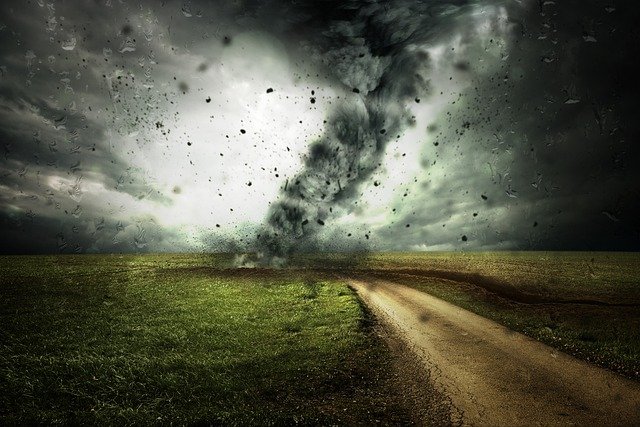Solastalgia: The Emotional Toll of Environmental Change
The world around us is changing rapidly, and with it, our emotional connection to place. Solastalgia, a term coined by philosopher Glenn Albrecht, describes the distress caused by environmental change. This phenomenon is becoming increasingly relevant as climate change alters landscapes and communities worldwide. Read below to explore the psychological impact of environmental shifts and how society is grappling with this emerging challenge.

The Origins of Solastalgia
The term solastalgia was first introduced in 2003 by environmental philosopher Glenn Albrecht. He developed the concept while studying the impact of large-scale open-cut coal mining on communities in the Upper Hunter Valley of New South Wales, Australia. Albrecht observed that residents were experiencing profound distress due to the transformation of their local landscape, even though they hadn’t physically relocated.
Albrecht’s work drew attention to the psychological dimensions of environmental change, highlighting how our mental well-being is intrinsically linked to the health and stability of our surroundings. Since its introduction, the concept has been applied to various contexts, from communities affected by natural disasters to indigenous populations facing the loss of ancestral lands.
The Psychological Impact of Environmental Change
Solastalgia manifests in various ways, often leading to feelings of loss, anxiety, and powerlessness. As familiar landscapes transform, individuals may experience a sense of disorientation and disconnection from their environment. This emotional distress can have significant implications for mental health, potentially contributing to depression, anxiety disorders, and post-traumatic stress.
Research has shown that solastalgia is particularly acute in communities directly impacted by environmental degradation, such as those affected by mining, deforestation, or extreme weather events. However, the phenomenon is becoming increasingly widespread as global climate change alters ecosystems and weather patterns on a broader scale.
Solastalgia in the Context of Climate Change
As the effects of climate change become more apparent, solastalgia is emerging as a widespread psychological response. Rising sea levels, intensifying natural disasters, and shifting weather patterns are altering landscapes and ecosystems worldwide. These changes not only threaten physical safety and livelihoods but also disrupt the emotional and cultural connections people have with their environments.
In coastal communities facing sea-level rise, residents may experience solastalgia as they watch familiar shorelines disappear. In agricultural regions, farmers grapple with changing growing seasons and unpredictable weather patterns, leading to a sense of loss and uncertainty. Even in urban areas, extreme heat waves and air pollution can transform the experience of city life, contributing to feelings of solastalgia among residents.
Coping Strategies and Resilience
While solastalgia presents significant challenges, communities and individuals are developing strategies to cope with environmental change and build resilience. One approach involves fostering a sense of agency through environmental activism and community engagement. By taking action to address environmental issues, individuals can combat feelings of powerlessness and create a sense of hope for the future.
Another strategy focuses on strengthening social connections within communities affected by environmental change. Support networks and community organizations can provide emotional support, share resources, and work collectively to adapt to new environmental realities. This social cohesion can help mitigate the psychological impact of solastalgia and build community resilience.
The Role of Environmental Education and Awareness
Education plays a crucial role in addressing solastalgia by helping individuals understand and contextualize environmental changes. Environmental education programs can provide the knowledge and skills needed to adapt to changing conditions, empowering individuals to take positive action. Additionally, raising awareness about solastalgia itself can help validate the emotional experiences of those affected, reducing feelings of isolation and helplessness.
Implications for Urban Planning and Policy
Recognition of solastalgia has implications for urban planning and environmental policy. Policymakers and urban planners are increasingly considering the psychological impact of environmental change in their decision-making processes. This includes efforts to preserve green spaces in urban areas, implement climate adaptation measures, and involve communities in environmental planning decisions.
Some cities are pioneering innovative approaches to combat solastalgia, such as creating “resilience hubs” that serve as community centers during environmental crises and provide resources for long-term adaptation. These initiatives aim to strengthen community ties and provide spaces where residents can find solace and support in the face of environmental challenges.
The Future of Solastalgia Research
As awareness of solastalgia grows, researchers are exploring its implications across various disciplines, including psychology, environmental science, and public health. Future research may focus on developing targeted interventions to address solastalgia in vulnerable populations and investigating the long-term mental health impacts of chronic environmental stress.
Additionally, there is growing interest in understanding how cultural differences influence experiences of solastalgia and developing culturally appropriate strategies for addressing it. This research has the potential to inform more holistic approaches to environmental management and mental health care in the face of global environmental change.
In conclusion, solastalgia represents a growing challenge as environmental changes reshape our world. By recognizing and addressing this phenomenon, we can better support individuals and communities in navigating the emotional landscape of a changing planet. As we continue to grapple with the realities of climate change, understanding and mitigating solastalgia will be crucial for maintaining mental well-being and fostering resilience in the face of environmental uncertainty.





